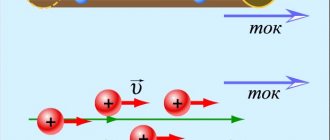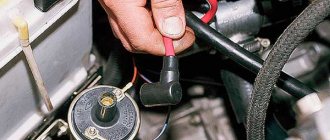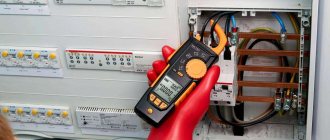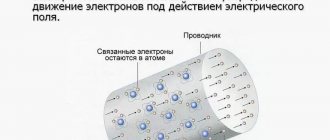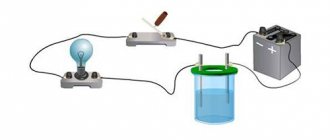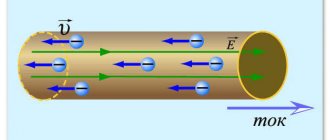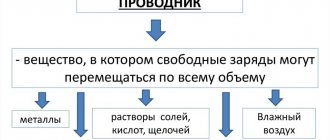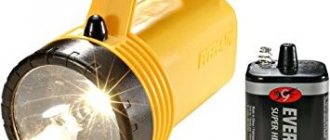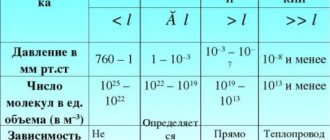Pulse currents
- electric currents of different polarity, used for the purpose of treatment and diagnosis, arriving to the patient intermittently in the form of separate “jokes”, “portions” (pulses). Treatment with pulsed currents is used independently or (more often) as part of complex therapy. The pulses have different shapes, recorded by an oscilloscope, the edges are determined by the different speed of voltage increase after a pause and decrease before the subsequent pause. They follow each other either evenly or in the form of periodically repeating series with intervals between them. The pulse frequency is expressed in hertz, the duration in milliseconds, the amplitude and average values of their strength and voltage - in milliamps and volts.
The group of Pulse currents includes: 1) Pulse currents of constant polarity and low frequency - Leduc, Lapic, tetanizing and diadynamic currents; 2) Pulse currents of variable polarity and medium frequency - interference, sinusoidal modulated, fluctuating; 3) Pulse currents of alternating polarity and high frequency - see Darsonvalization.
Current Leduc
— Pulse current with pulses that rise sharply and after some time quickly fall, rectangular in shape.
In practice, a current with a frequency of 5-150 Hz is used. It was first proposed for medicinal purposes by the French. physicist and biologist S. Leduc. Lapika current
- Pulse current with pulses gradually increasing and decreasing, i.e., exponential in shape.
French was first proposed. neurophysiologist L. Lapik. Tetanizing current
is characterized by impulses close to a triangular shape, with a frequency of 100 Hz and a duration of 1-1.5 ms;
is an improved version of the unstable frequency alternating current proposed by M. Faraday. Rice.
1. Graphic representation of diadynamic currents: a - single-cycle continuous current (this type of current is used mainly for pain); b - push-pull continuous current (used for pain relief, improving blood circulation in the extremities, and relieving spasm of peripheral vessels); c - single-cycle intermittent current - “syncopation rhythm” (used for electrical stimulation of nerves and muscles); d - alternation of single-cycle and push-pull currents - “short period” current (used for pain relief, improving tissue trophism, reducing swelling); e - alternation of push-pull and single-stroke currents - “long period” current (used for pain relief, improvement of trophism, promotes resorption of scars); e — single-cycle wave current (used for electrical stimulation of nerves and muscles); g - push-pull wave current (used for pain relief and electrical stimulation of nerves and muscles). The ordinate is the current strength (I), the abscissa is time (t). Diadynamic currents
— Pulse currents with half-sinusoidal pulses (Fig. 1) with a frequency of 50 and 100 Hz. First proposed by A. N. Obrosov and I. A. Abrikosov for treatment. use in 1937. In the 50s. 20th century these currents were introduced into medical practice by P. Bernard. The treatment method is called diadynamic therapy.
Interference currents
(syn. Nemeck currents) arise as a result of interference (superposition) in the tissues of the patient’s body of two alternating currents with pulses of unequal average frequencies (4000 and 3900 Hz);
are offered for treatment. application of Austrian physicist H. Nemec in 1951. Fig.
2. Graphic representation of sinusoidal modulated currents: a - initial current in different modes; b - currents in alternating mode; c - currents in constant mode; PM - “constant modulation” (not changing during the procedure), used for electrical stimulation of facial muscles and smooth muscles of internal organs (on the left for mild lesions, on the right for severe lesions); PP - “send - pause” - alternating current with a pause, used for electrical stimulation of smooth and striated muscles (on the left for mild, on the right for severe disorders of electrical excitability); PN - “send - carrier frequency” - alternating modulated current with the original one; IF - “intermittent frequencies” - alternating currents with different frequencies: PN and IF are used for pain relief, improving blood and lymph circulation in the extremities (on the left for acute pain and severe trophic disorders, on the right - for mild pain and mild trophic disorders); GM - “modulation depth”, degree of current modulation (in percentage), 0% - initial modulated current (rarely used for treatment); 25-5 0-7 5% - partially modulated current (on the left - used for acute pain and severe trophic disorders, on the right - for non-acute pain and mildly expressed trophic disorders); 100% - fully modulated current (used for mild pain, for electrical stimulation of nerves and muscles); P - overmodulation - fully modulated current followed by a pause (used for electrical stimulation of severely affected nerves and muscles). Sinusoidal modulated alternating currents with a frequency of 5000 Hz and arriving after modulation (low-frequency conversion) to the electrodes in the form of pulses from 10 to 150 Hz are proposed and introduced into treatment. practice by V. G. Yasnogorodsky in 1966 (Fig. 2). The method of treatment with currents is called amplipulse therapy after the name of the domestic device that generates these currents, Amplipulse. Fluctuating (aperiodic) currents with pulses randomly combining with each other with a frequency from 100 to 2000 Hz were proposed in 1964 by L. R. Rubin for therapeutic purposes in dentistry. The method of treatment with these currents is called fluctuarization.
Mechanism of action
The main effect of pulse currents is the analgesic effect. Currents with sinusoidal and half-sinusoidal pulse shapes (diadynamic, interference, sinusoidal modulated and fluctuating) have the greatest analgesic effect. In the mechanism of the analgesic effect of these currents, two points can be distinguished. The first is a direct inhibitory effect such as a nerve blockade in the area of influence on the conductors of pain sensitivity. This leads to an increase in the pain threshold, a decrease or cessation of the flow of afferent pain impulses in the c. n. pp., i.e., to the occurrence of anesthesia of varying degrees. The second stage is the creation in c. n. With. dominants of irritation (according to A. A. Ukhtomsky) in response to a powerful flow of rhythmically incoming impulses from intero- and proprioceptors from the zone of influence of I. t. The dominant of rhythmic irritation “overrides” the dominant of pain.
As a result, the response impulse from the c is normalized. n. p., which contributes to breaking the vicious circle “center of pain - c. n. s.—a source of pain.” The irritation of autonomic nerve fibers that occurs under the influence of current and the rhythmic contractions of muscle fibers in the affected area help stimulate collateral circulation, normalize the tone of peripheral vessels, which improves blood supply and trophism in the pathological focus.
According to the general biological law of adaptation, the “irritation-response” ratio under the influence of I. t. treatment changes significantly over time: the threshold for the perception of currents increases, and the analgesic effect decreases (addiction reaction). To reduce this phenomenon, pulse currents are usually used not only at one frequency, but also in the form of various and sequentially applied modulations—alternations of unequal frequencies in different time ratios (short and long period currents, etc.).
I. t. constant polarity and low frequency cause significant sensory and motor irritation due to the rapid increase and decrease in voltage in the impulse; this irritation manifests itself even with a low current strength as a burning or tingling sensation under the electrodes and intensifies with increasing current, accompanied by a tetanic contraction of the affected muscles. In connection with the above features of action, Leduc, Lapic, tetanizing currents are used primarily for electrodiagnostics (see) and for electrical stimulation (see).
Pulse currents of alternating and constant polarity, in particular sinusoidal and half-sinusoidal shapes and medium frequencies, cause less sensory irritation while maintaining motor excitation. This allows them to be used for both pain relief and electrical stimulation.
Diadynamic currents have not only an analgesic effect; their use for trophic disorders and skin damage accelerates regeneration and promotes the replacement of coarse scar tissue with looser connective tissue. The effect of diadynamic currents on the area of the sympathetic nodes helps to normalize blood circulation in the extremities; in case of cerebral atherosclerosis with the syndrome of regional cerebral hypertension, it reduces the tone of intracerebral vessels and improves blood flow in them; in case of migraine, it stops an attack. Sinusoidal modulated currents have the widest spectrum of action, causing positive responses from both the sensory and motor spheres and the trophic function of the nervous system. In this regard, they have found application in a number of functional disorders; Thus, the use of sinusoidal modulated currents in patients with the initial stage of lymphostasis of the extremities helps to improve the drainage function of the lymphatic system. In patients with arterial hypertension of renal origin, stage I - IIA, the use of these currents on the area of projection of the kidneys helps to reduce blood pressure due to changes in glomerular filtration and increased renal blood flow, etc.
Fluctuating currents have not only analgesic, but also anti-inflammatory effects. Their use in purulent inflammation helps to enhance phagocytosis in the lesion, delineate it from “healthy” tissue and improve the course of the wound process.
Pulsed DC
Pulse constant
(
PDC
) or
pulsating direct current
is a periodic current whose value varies but never changes direction.
Some authors use the term pulsed direct current
to describe a signal consisting of one or more square-wave ("flat") rather than sinusoidal pulses.
Indications, contraindications
The main indications for the therapeutic use of diadynamic, interference, sinusoidal modulated currents: diseases and injuries of soft tissues of the torso and limbs (bruise, sprained ligaments and muscles, myositis, ligamentitis, etc.), diseases and consequences of injuries of the spine and joints (osteochondrosis, deforming spondylosis, osteoarthritis, spondyloarthrosis, etc.); peripheral nerves (radiculitis, plexitis, neuritis, neuralgia, herpes zoster), spinal cord and its membranes (arachnoiditis, myelitis), occurring with pain or paresis and paralysis of the limbs; damage to the vessels of the brain and peripheral vessels of the extremities or disturbances in their tone (atherosclerosis of the cerebral vessels in the initial period, Raynaud's disease, obliterating endarteritis stages I-III, atherosclerotic occlusion of the vessels of the extremities I-II stages, various forms of migraine); chronic diseases of the abdominal organs and conditions after operations on them, occurring with atony of smooth muscles; a number of diseases of the female and male genital organs (chronic inflammation of the uterine appendages and prostate gland), accompanied by severe pain. Diadynamic currents are also used for vasomotor rhinitis, chronic adhesive otitis media, and sinusitis. Diadynamic and sinusoidal modulated currents are used to expel stones from the ureter (with appropriate urological indications and a special technique). Interference currents are used, in addition to the indications listed above, for electronic anesthesia (see). Sinusoidal modulated currents are also used to treat patients with chronic. lymph, edema of the lower extremities.
Fluctuating currents are primarily used in dentistry: for neuralgia of the trigeminal, glossopharyngeal and other nerves, for arthritis of the temporomandibular joint, alveolitis (alveolitis), periodontal disease, for inflammatory diseases (acute, chronic, aggravated) and acute purulent processes of the maxillofacial and submandibular areas (phlegmon, abscess in the postoperative period).
The main contraindications to the use of diadynamic, interference, sinusoidal modulated, fluctuating currents: individual intolerance to currents, bone fractures and dislocations (until consolidation or reduction), extensive hemorrhages or a tendency to them, thrombophlebitis, acute purulent infection (the use of fluctuating currents is possible in the postoperative period ), neoplasms, hypertension stages II B and III, hron, circulatory failure stages II-III; hron, coronary heart disease with symptoms of angina pectoris and severe sinus bradycardia, pregnancy of all stages.
Indications, contraindications and treatment methods for pulsed current Lapic, Leduc and tetanizing (rectangular, triangular and exponential shape) - see Electrodiagnostics, Electrosleep, Electrical stimulation.
DC component of current and voltage. DC
If you consider the shape of the current in the load at the output of rectifiers or converters, you can see ripples - changes in the current value that exist as a result of the limited capabilities of the rectifier filter elements. In some cases, the magnitude of the ripples can reach quite large values that cannot be ignored in the calculations, for example, in rectifiers without the use of capacitors. This current is usually called pulsating or pulsed. In these cases a constant DC
and variable
AC
components.
DC component
- a value equal to the average current value over a period.
AVG
- abbreviation Avguste - Average.
AC component
- periodic change in current value, decrease and increase relative to the average value.
It should be taken into account when calculating that the value of the pulsating current will not be equal to the average value, but to the square root of the sum of the squares of two quantities - the constant component ( DC
) and the root mean square value of the alternating component (
AC
), which is present in this current, has a certain power and is summed with the power of the direct component.
The above definitions, as well as AC
and
DC
can be used equally for both current and voltage.
Devices for treatment with pulsed currents
For treatment with diadynamic currents, there are domestic devices SNIM-1, Model-717, Tonus-1 and Tonus-2. Current pulses with a frequency of 50 and 100 Hz in the devices are obtained by one- and two-half-wave rectification of the AC mains current.
Rice. 3. Device SNIM-1 for treatment with diadynamic currents (pulse currents with a frequency of 50 and 100 Hz).
In addition to rectifiers, the circuit of the devices includes a rectangular pulse generator with a multivibrator (an electronic device used to produce electricity with a wide range of frequencies and a shape close to rectangular). This current is then used in the apparatus to produce electrical current of a half-sinusoidal shape with a gradual decay of the pulse. The SNIM-1 device (Fig. 3) generates seven types of currents: single-cycle and two-cycle continuous and wave currents, currents in the rhythm of syncope (alternating single-cycle continuous with a pause), currents “short and long period” (alternating single- and two-cycle continuous currents in different time relationships).
All currents, except continuous ones, can be used in two forms of sending - “constant” and “variable”. In a “constant” form, currents have constant specified parameters. With “variable” - some current parameters (duration of the sending period, increase and decrease in the amplitude of pulses) can be changed within certain limits. This makes it possible to significantly expand the therapeutic use of diadynamic currents, in particular, to use them for pain relief in patients with intolerance to continuous currents and for electrical stimulation of muscles in diseases of internal organs and lesions of peripheral nerves. The power consumed by the device from the network is 60 W, weight is 12 kg. Model-717 is a portable device that generates the same types of currents as SNIM-1, in a “permanent” form of bursts. The power consumption of the device is 35 W, weight is 4 kg. The Tonus-1 device is used in hospital settings and at home; generates all types of currents as the devices described above, as well as single-cycle and push-pull currents in new and varied combinations. The form of the parcels is “permanent”. The power consumption of the device is 25 W, weight is 7 kg. Foreign devices for treatment with diadynamic currents - D padinam i k (PNR), Bipulsator (NRB), etc. - generate diadynamic and galvanic currents, which can be used separately and in combination with each other. The form of the parcels is “permanent”.
Rice. 4. Amplipulse-4 device for treatment with sinusoidal modulated currents (pulse currents with a frequency of 5000 Hz).
For amplipulse therapy, domestic devices Amplipuls-3T and Amplipuls-4 are used (Fig. 4). The device circuit includes a generator of carrier sinusoidal oscillations of medium frequency (5000 Hz), a generator of modulating oscillations of low frequency (10-150 Hz), a generator of messages and a power supply. Amplipulse-3T generates sinusoidal modulated oscillations, continuous ("constant modulation") and alternating with a pause ("send - pause") with pulses of other frequencies ("alternating frequencies") or with modulated oscillations ("send - carrier frequency"). The duration of the messages can be adjusted from 1 to 5 seconds. Currents are used in AC and DC modes. The depth of modulation (the degree of its expression) can be changed. With increasing modulation depth, the exciting effect of currents increases. This is taken into account when using the method to lay down. using the device. The power consumption of the device is no more than 170 W, weight is 17 kg. Amplipulse-4 is a portable model of the device (weight 7.5 kg); generates the same types of currents as Amplipulse-3, but with fewer modifications.
In the domestic apparatus for fluctuarization ASB-2, the source of alternating current voltage of audio frequency (from 100 to 2000 Hz) is a germanium diode. The voltage in the device is supplied in three versions: alternating, partially “rectified” and constant polarity (current No. 1, 2, 3, respectively). For use in dentistry, a set of intraoral electrodes is attached to the device. The weight of the device is 6.5 kg, power consumption is 50 watts.
All described devices, with the exception of Tonus-1 and Amplipulse-4, require grounding when used.
Devices that generate electrical current with rectangular, triangular, and exponential pulse shapes—see Electrosleep, Electrodiagnostics, Electrical stimulation. There is no serial production of domestic devices for treatment with interference currents, since devices of the Amplipulse type are more effective. Devices for electronarcosis using interference currents - see Electronarcosis.
Pulsating current
We got acquainted with direct and alternating currents.
We call direct current a current that does not change either in magnitude or direction. Alternating current, on the contrary, changes all the time both in magnitude and direction. When studying alternating current, the sinusoid was accepted as the main form of its change.
However, in radio engineering one has to deal with non-sinusoidal alternating currents, EMF and voltages, the graphs of which differ from the sine wave graph.
There are currents whose direction is constant, but whose magnitude changes all the time.
One example of such a non-sinusoidal current is a pulsating current, the graph of which is shown in Figure 1.
According to GOST 19880-74 ELECTRICAL ENGINEERING. BASIC CONCEPTS. Terms and definitions: pulsating current is a periodic electric current that does not change its direction .
Figure 1. Illustration of pulsating current.
As can be seen from the graph, such a current continuously changes in value, but passes through the circuit in one direction. Indeed, the current curve is located above the time axis, not crossing it anywhere, and therefore the direction of the current in the circuit does not change.
With a pulsating current, the electrons in the conductor move all the time in one direction, but their movement either speeds up or slows down. The movement of each individual electron in this case is similar to the movement of a passenger walking up and down the carriage of a moving train. The passenger moves with the train all the time forward, but the speed of his movement accelerates when he walks along the train and slows down when he goes back.
An example of a circuit in which a pulsating current is created is any rectifier device.
Pulsating current can also be obtained by simultaneously passing direct and alternating currents through the circuit. That is, any pulsating current can be represented as the sum of two currents - direct and alternating. The only necessary condition is that the direct current be greater than the amplitude value of the alternating current.
Figure 2 shows a graph of the pulsating current, as well as graphs of the direct and alternating currents of which it consists.
Figure 2. Creation of pulsating current. a) the direction of the pulsating current does not change, only its magnitude changes; b) alternating component of the pulsating current; c) constant component of the pulsating current.
Let's check graphically the process of occurrence of a pulsating current by adding two graphs - direct and alternating sinusoidal currents (Figure 3).
Figure 3. The resulting curve obtained from the addition of direct and sinusoidal currents.
In Figure 3, the alternating current curve and the direct current line added to it are plotted with a dotted line, while the amplitude of the alternating current is taken slightly less than the magnitude of the direct current.
At the initial moment of time, when the value of the alternating current is equal to zero, the sum of the currents will be equal to the value of the direct current. Therefore, point 1 will be the starting point of the resulting current graph.
Since during the first quarter of the period of its change the alternating current increases, coinciding in direction with the direct current, the total current in the circuit will also increase and will reach its maximum value at the moment when the alternating current reaches its greatest value (point 2).
After a time equal to half the period T/2, the alternating current will decrease to zero and the total current in the circuit will become equal to the direct current (point 3). In the next half of the period, the alternating current will begin to flow in the opposite direction, that is, towards the direct current. The total current in the circuit will become less than constant and its value will become minimal when the alternating current reaches its maximum negative value (point 4).
By the end of the last quarter of the period, a decrease in the magnitude of the alternating current will lead to the fact that the magnitude of the direct current is momentarily established in the circuit (point 5), after which the whole process will be repeated.
So, by graphically adding the direct and alternating currents, we get a graph of the pulsating current. Consequently, the pulsating current, graphically depicted in Figure 3, is a complex current consisting of two simple currents: direct, called the constant component of the pulsating current , and an alternating sinusoidal current, called the alternating component of the pulsating current .
The direct and alternating components of the pulsating current can be easily separated from each other, that is, you can obtain separate alternating current and separate direct current.
An example of such a division is shown in Figure 4.
Figure 4. Circuit for separating the AC and DC components of the pulsating current.
The variable component is directed along the easiest path for it through the capacitor, and the constant component through the inductor.
DID YOU LIKE THE ARTICLE? SHARE WITH YOUR FRIENDS ON SOCIAL NETWORKS!
Source
